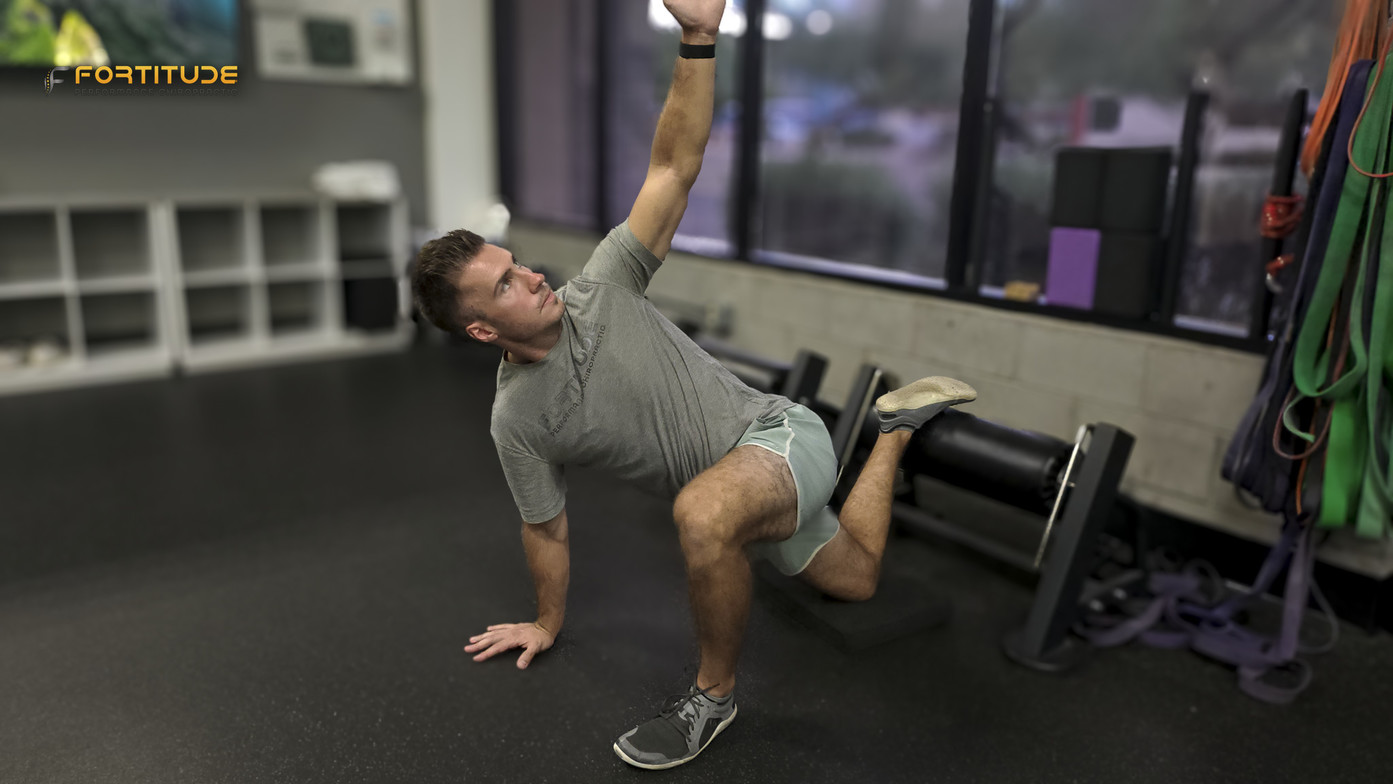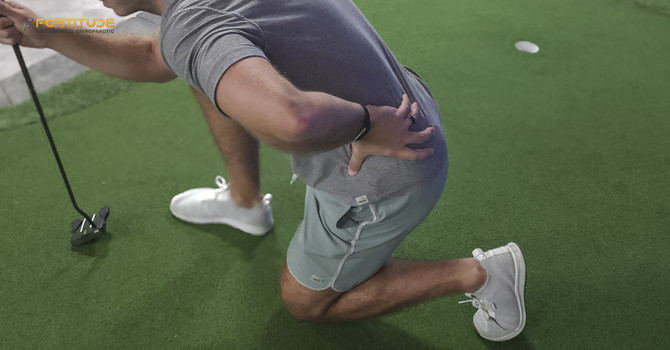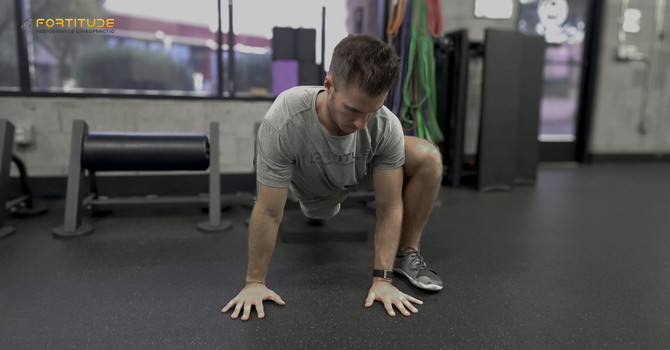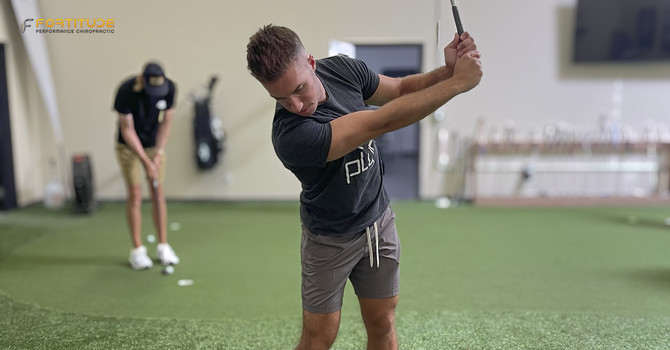
Why Golf Beats Up Your Back More Than Any Other Sport
If you’re a golfer, you know the feeling. By the 7th hole your lower back starts to tighten. You sit gingerly in the cart, trying to stretch on the ride to the next tee. By the end of the round, you’re relying on ibuprofen just to finish.
For many golfers in Scottsdale, that post-round back ache has become an unwelcome part of the game. But it shouldn’t be. Golf is meant to be relaxing, not painful.
So why does a sport often called “low-impact” leave your back feeling like you’ve been through a collision?
Why Golf Is So Hard on Your Spine
Golf looks simple from the outside. Walk a few miles, swing a club, repeat. But the lower back is the most common site of injury in the sport. Here’s why:
Repetitive twisting
Every swing requires powerful rotation through the spine. Do that dozens or even hundreds of times in a single round, and the strain builds quickly.
One-sided swing
Most golfers swing in only one direction. That creates muscle imbalances, one side overdeveloped, the other underused, which makes the spine more vulnerable.
High torque and power
A smooth-looking drive generates forces several times your body weight. If your body isn’t prepared, much of that stress ends up in the lower back.
Walking and bending
Four hours on uneven terrain, plus constant bending to tee balls or retrieve putts, slowly wears down the muscles that support your spine. By the back nine, those stabilizers are fatigued, leaving your back to pick up the slack.
Poor warm-up
Many golfers head straight from the car to the first tee. Starting cold with stiff muscles forces the lower back to move more than it should.
Add these factors together, and it’s no surprise the back often complains. But the real issue isn’t always the back itself.
When the Back Isn’t Really the Problem (Finding the Real Culprit)
Most golfers assume pain equals a “back problem.” But in many cases, the back is just the part that takes the hit when something else isn’t moving well.
The golf swing depends on hips, core, upper back, and shoulders all working together. When one of those areas is tight or weak, the lower back makes up the difference. Over time, that extra workload leads to irritation and pain.
That’s why temporary fixes like stretching, icing, or foam rolling the lower back rarely last. They soothe the symptom but don’t address the reason the pain started.
One Scottsdale golfer we worked with complained of “tightness” by the 12th hole every round. A movement screen showed the problem wasn’t his back at all, it was limited hip rotation. Once his hips were moving freely, his back pain disappeared.
It’s a common story: where it hurts is not always where the problem starts.
How We Fix Back Pain for Golfers (The Fortitude Difference)
The key to lasting relief is identifying what’s overloading the lower back and correcting it. Golf-specific movement assessments help pinpoint those weak spots.
The main areas we focus on are:
- Hip mobility: Limited rotation here forces the spine to twist harder.
- Core stability: When the core doesn’t activate properly, the lower back ends up stabilizing every swing.
- Upper back and shoulders: Stiffness above the lumbar spine shifts the work downward.
- Past injuries: Old ankle, knee, or hip injuries can subtly change movement patterns, adding hidden stress to the back.
During an evaluation, golfers move through swing-related positions, balance tests, and flexibility checks. These make it clear which areas are restricted or underperforming. Addressing those areas allows the spine to return to its proper role, part of the team, not carrying the load alone.
Golfers who correct these weak links don’t just feel better. They often report smoother swings, more distance, and confidence that their back can handle a full 18 holes without flaring up.
Ready to Get Back in the Game?
Golf back pain doesn’t have to be part of the sport or part of getting older. The real solution is finding out why your back is being overworked and addressing that issue.
Imagine walking off the 18th green without stiffness, ice packs, or painkillers. That’s possible when your body moves the way it was designed to.
If back pain keeps showing up on the course, it’s worth getting a full-body assessment. A proper evaluation will reveal what’s really driving the problem (and how to fix it) so you can get back to playing pain-free.
FAQ: Golf and Back Pain
Is golf bad for your back?
Not by itself. Golf becomes a problem when weak links, like stiff hips or poor core stability, push too much strain into the lower spine.
Should I rest or keep playing if my back hurts?
Sharp, shooting pain or symptoms that travel down the leg should be checked before you play again. A dull ache that eases once you warm up is less concerning, but recurring pain is still a sign something needs attention.
Does my swing need to change?
Usually not. It’s often your body that needs to move better. Once hips, core, and upper back are working as they should, the swing naturally improves.
What’s the best exercise for golfers with back pain?
It depends on the cause. For some, hip stretches make the difference. For others, core activation is key. The most effective exercise is the one that targets your specific limitation.
Can a chiropractor really help my golf back pain?
Yes, especially if they specialize in sports and movement. The right combination of hands-on treatment and corrective exercise helps restore proper motion and keeps pain from coming back.

Fortitude Performance Chiropractic
Contact Me



